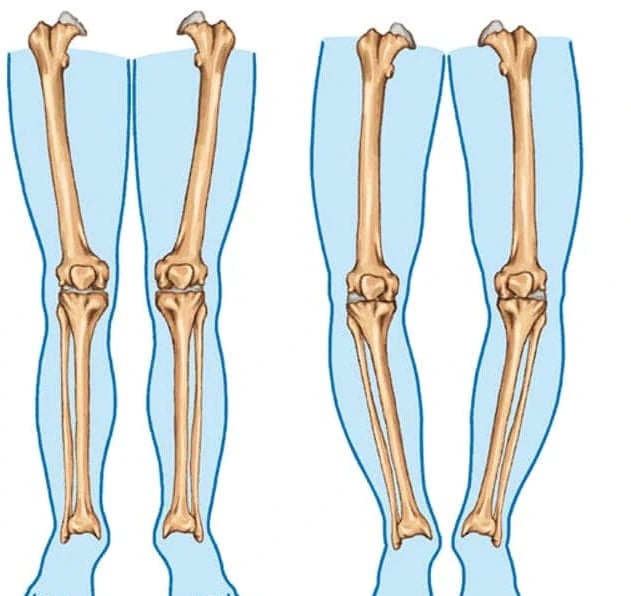In most cases, the treatment for "O-legs" involves physiotherapeutic exercises. Exercises focus on improving leg muscle strength, balance, and joint support. Some of these exercises include strength exercises for thigh muscles, balance exercises, and stretching exercises.
Note: Before starting any exercise program, especially for children, it is recommended to consult with a doctor or physiotherapist to ensure that the exercises are safe and suitable for the child's age and health condition.
"O-legs" or "Genu varum" is an orthopedic term describing a deformity in which the knees are positioned outward in relation to the ankles. This condition results in the legs forming the shape of the letter "O." The deformity is often observed in young children and is typically most pronounced between the ages of 2 and 3. Genu varum, or "O-legs," are usually physiological, meaning it is a normal part of development and often resolves spontaneously as the child grows and their skeletal system matures.
In newborns, the legs are often naturally turned outward, and during the first few years of life, bones and joints gradually adjust and form correctly. As the child matures, internal structures (such as ligaments) become stronger, and muscles become more capable of supporting the proper leg position.
In most cases, genu varum improves spontaneously, and by school age, most children have a normal leg position. However, in some cases, "O-legs" may be more pronounced or persist longer than usual.
If you notice a pronounced form of "O-legs" in your child, it is advisable to consult with a pediatrician or orthopedic specialist. They will be able to assess the child's condition, conduct a physical examination, and recommend further steps or interventions if necessary. Our physiotherapists and rehabilitation trainers at Full Fit are available to provide a detailed exercise plan tailored to your or your child's deformity.


